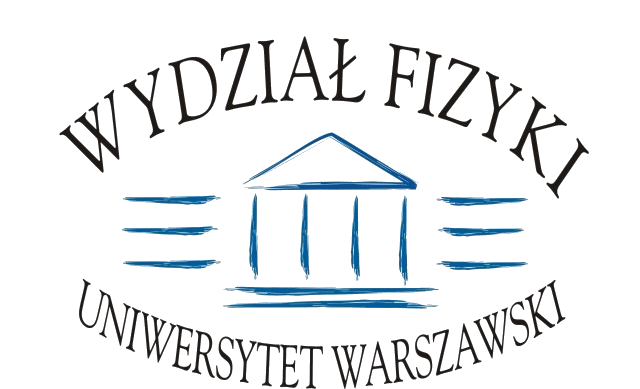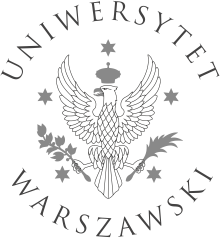Seminarium Teorii Oddziaływań Elementarnych
2006/2007 | 2007/2008 | 2008/2009 | 2009/2010 | 2010/2011 | 2011/2012 | 2012/2013 | 2013/2014 | 2014/2015 | 2015/2016 | 2016/2017
2016-06-13 (Poniedziałek)
Stanisław Mrówczyński (NCBJ and UJK Kielce)
Universality of Hard-Loop Action
The effective actions of gauge bosons, fermions and scalars, which are obtained within the hard-loop approximation, are shown to have unique forms for a whole class of gauge theories including QED, scalar QED, super QED, pure Yang-Mills, QCD, super Yang-Mills. The universality occurs irrespective of a field content of each theory and of variety of specific interactions. Consequently, the long-wavelength or semiclassical features of plasma systems governed by these theories such as collective excitations are almost identical. An origin of the universality, which holds within the limits of applicability of the hard-loop approach, is discussed.
2016-06-06 (Poniedziałek)
Mirko Serino (IFJ)
Scattering amplitudes and jet physics in High Energy Factorisation
The latest developments in the recursive computation of multileg scattering amplitudes in QCD in the High Energy Factorization formalism are described. Then their phenomenological application to the description of inclusive 4 jet production at the LHC is presented. Particular emphasis is given to the search for Double Parton Scattering and to the observables and phase space constraints which can best highlight it in future data analyses. Finally, we briefly present an early attempt to constrain Double Parton Distribution functions.
2016-05-30 (Poniedziałek)
Hervé Moutarde (IRFU, Service de Physique Nucléaire CEA, Centre de Saclay)
Nucleon Reverse Engineering: Structuring Hadrons With Colored Degrees of Freedom
Much attention has been devoted in recent years to the three-dimensional quark and gluon structure of the nucleon. In particular the concept of Generalized Parton Distributions promises an understanding of the generation of the charge, spin, and energy-momentum structure of the nucleon by its fundamental constituents. Forthcoming measurements with unprecedented accuracy at Jefferson Lab and at CERN will presumably challenge our quantitative description of the three-dimensional structure of hadrons. To fully exploit these future experimental data, new tools and models are currently being developed.
After a brief reminder of what makes the Generalized Parton Distribution a unique tool to understand the nucleon structure, we will discuss the constraints provided by the existing measurements and review recent theoretical developments. We will explain why these developments naturally fit in a versatile software framework, named PARTONS, dedicated to the phenomenology and theory of GPDs.
After a brief reminder of what makes the Generalized Parton Distribution a unique tool to understand the nucleon structure, we will discuss the constraints provided by the existing measurements and review recent theoretical developments. We will explain why these developments naturally fit in a versatile software framework, named PARTONS, dedicated to the phenomenology and theory of GPDs.
2016-05-23 (Poniedziałek)
Sebastian Trojanowski (NCBJ)
Non-thermal dark matter, low reheating temperature and supersymmetry
Current observational limits on the dark matter annihilation cross section, as well as expected sensitivities of future experiments suggest that unraveling the nature of dark matter may require going beyond the standard thermal WIMP paradigm. In my talk I will discuss this issue in the context of low reheating temperature of the Universe after the cosmological inflation. I will assume that, either the dark matter particles are extremely weakly interacting and therefore they were produced only in out-of-equilibrium processes, or that the standard equilibrium production of WIMP-like particles was additionally supplemented by a non-thermal component. The case with a suppressed dark matter relic density due to an additional entropy production will also be considered. In addition, I will discuss possible prospects for determining the properties of such non-standard WIMPs. All the results will be illustrated in the specific case of supersymmetric dark matter.
2016-05-16 (Poniedziałek)
Paweł Szczerbiak (IFT UW)
Blind spots and relic density of neutralino dark matter in the NMSSM
Current status of the spin-independent (SI) direct detection experiments may suggest that the WIMP dark matter (e.g. neutralinos in supersymmetric models) would interact very weakly with the nucleons. The so-called blind spots in parameter space correspond to the limit of vanishing SI interaction. In my talk I will discuss several classes of blind spots of the NMSSM and their influence on the relic abundance of Higgsino-singlino dark matter. I will also comment on the spin-dependent experiments, which in the nearest future may become competitive to the SI ones in limiting the parameter space.
2016-05-09 (Poniedziałek)
Krzysztof Rolbiecki (IFT UW)
The NMSSM lives: with the 750 GeV diphoton excess
We propose an NMSSM scenario that can explain the excess in the diphoton spectrum at 750 GeV recently observed by ATLAS and CMS. We show that in a certain limit with a very light pseudoscalar one can reproduce the experimental results without invoking exotic matter. The 750 GeV excess is produced by two resonant heavy Higgs bosons with masses ~750 GeV, which subsequently decay to two light pseudoscalars. Each of these decays to collimated photon pairs that appear as a single photon in the electromagnetic calorimeter. A mass gap between heavy Higgses mimics a large width of the 750 GeV peak. The production mechanism, containing a strong component via initial b quarks, ameliorates a possible tension with 8 TeV data compared to other production modes. We also discuss other constraints, in particular from low-energy experiments. Finally, we discuss possible methods that could distinguish our proposal from other physics models describing the diphoton excess in the Run-II of the LHC.
2016-04-25 (Poniedziałek)
Łukasz Nakonieczny (IFT UW)
Gravity induced terms and the stability of the one-loop effective potential
I will present results concerning the stability of the Higgs effective potential in curved spacetime. To this end, the gauge-less top-Higgs sector with an additional scalar field was considered. Using the heat kernel method the one-loop effective potential for the model at hand was derived. It was revealed that the lowest order nontrivial gravity induced terms are proportional to the square of the Riemman and the Ricci tensors. Next, the changes induced by these terms on the behavior of the effective potential in the small field region (electrovacuum minimum) and on the effective Higgs quartic coupling in the large field region were analyzed.
2016-04-18 (Poniedziałek)
Andrzej Kupść (Uppsala University)
Status of the muon g-2 puzzle
The subject of the seminar is experimental and theoretical determination of the anomalous magnetic moment of the muon. In the Standard Model, contributions to the anomaly come from virtual loops containing photons and the known massive particles. The largest uncertainty comes from hadronic contribution. The value of muon g-2 is an excellent place to search for the effects of new physics since both the theoretical and experimental values of the anomaly are determined to high precision. At present they are known with a similar relative precision of 0.5 ppm but there is more than 3 standard deviation difference between the two. The seminar will give status of new experiments at FNAL and at JPARC aiming to decrease the uncertainty by factor four. Also recent attempts to improve evaluation of the hadronic contribution by factor of two will be presented.
2016-04-11 (Poniedziałek)
Dmitry Zhuridov (IF Uniwersytet Śląski)
Clues to the `Particle Underground''
The composite models are among the promising theories to explain the open questions of the Standard Model in particle physics. Many of these models allow particles carrying both lepton number and color, e.g., leptoquarks and leptogluons. Sometimes also color-singlet leptohadrons can be accomodated. I will discuss possible effects of some of these new composites at the LHC, and in the generation of the baryon asymmetry of the universe and the neutrino masses.
2016-04-04 (Poniedziałek)
Eung Jin Chun (KIAS, Seoul, Korea)
LHC τ-rich tests of lepton-specific 2HDM for (g - 2)_μ
The lepton-sepcific (or type X) 2HDM (L2HDM) is an attractive candidate explaining the muon g - 2 anomaly requiring a light CP-odd boson A and large tan β. This scenario leads to τ -rich signatures, such as 3τ , 4τ and 4τ + W/Z, which can be readily accessible at the LHC. We first study the whole L2HDM parameter space to identify allowed regions of extra Higgs boson masses and various couplings. In the regions of interest, we derive the LHC8 constraints and then analyze the LHC14 prospects. A correlated study of the upcoming precision determination of the 125 GeV Higgs boson decay properties as well as the observation of multi-tau events at the next runs of LHC will be able to shed light on the L2HDM option for the muon g - 2.
Stron 1 z 3






